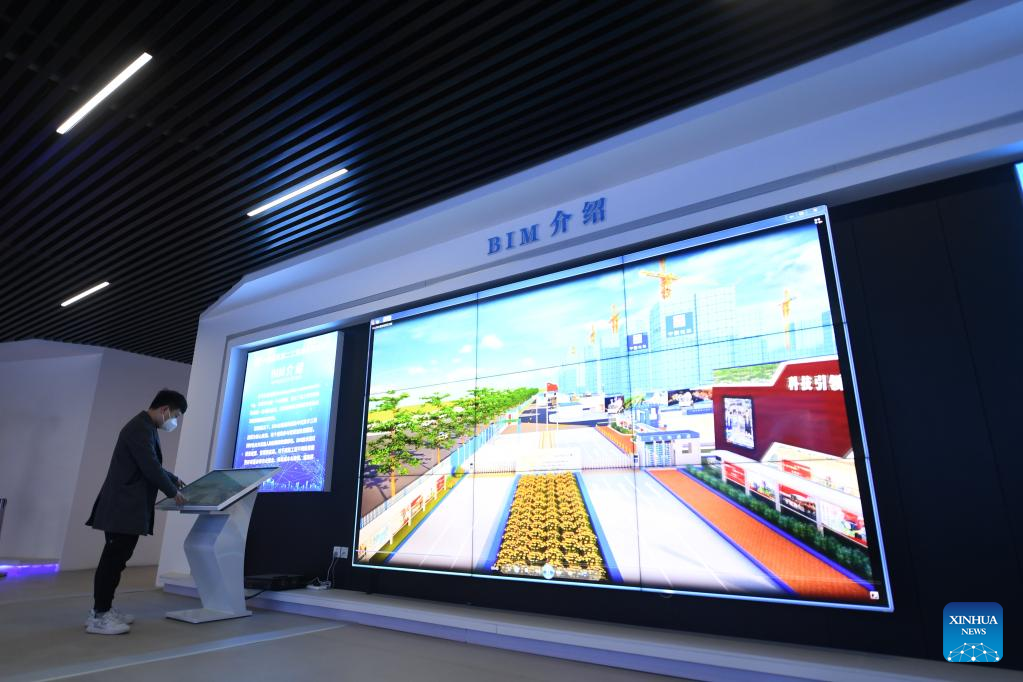
An engineer expounds on the building information modeling (BIM) technology in Xiong'an New Area, north China's Hebei Province, March 29, 2022. Dubbed China's youngest city and a "city of the future," Xiong'an New Area marks its fifth anniversary on Friday. China announced plans to establish Xiong'an New Area on April 1, 2017, to relieve Beijing of functions non-essential to its role as the national capital and advance the coordinated development of the Beijing-Tianjin-Hebei region. By the end of 2021, construction has begun on 177 key projects in Xiong'an, with a total investment of 618.4 billion yuan (97.2 billion U.S. dollars). Sixty of them have been completed. So far, the major roads to the city, the main streets in the city, the Ecological Corridor, and the urban water system have taken shape. (Xinhua/Zhu Xudong)
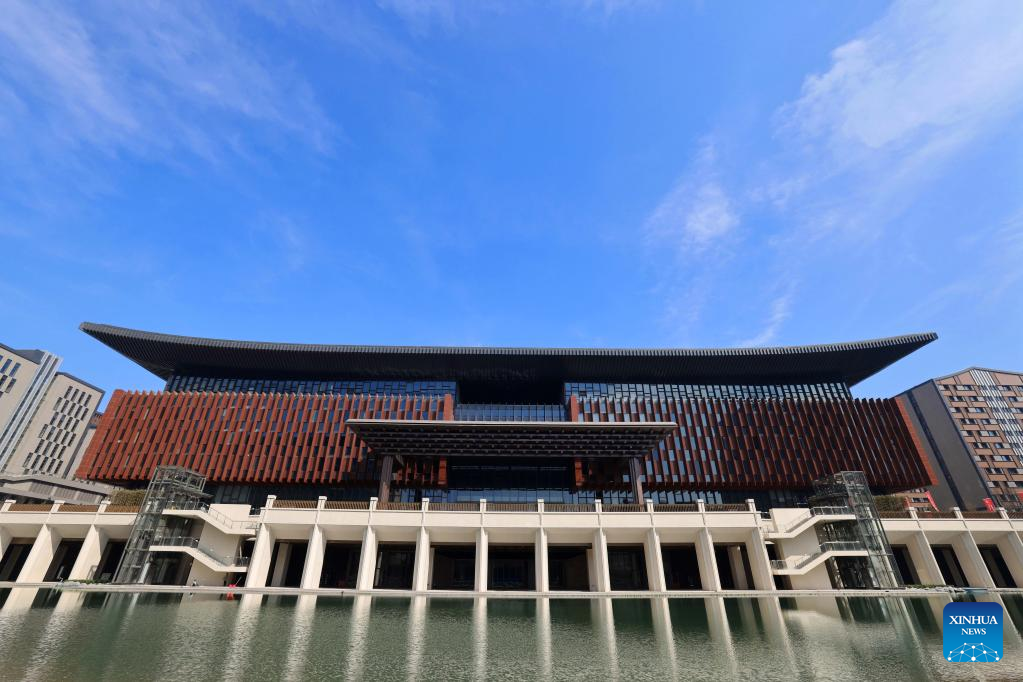
Photo taken on March 31, 2022 shows the business service center in Xiong'an New Area, north China's Hebei Province. Dubbed China's youngest city and a "city of the future," Xiong'an New Area marks its fifth anniversary on Friday. China announced plans to establish Xiong'an New Area on April 1, 2017, to relieve Beijing of functions non-essential to its role as the national capital and advance the coordinated development of the Beijing-Tianjin-Hebei region.By the end of 2021, construction has begun on 177 key projects in Xiong'an, with a total investment of 618.4 billion yuan (97.2 billion U.S. dollars). Sixty of them have been completed. So far, the major roads to the city, the main streets in the city, the Ecological Corridor, and the urban water system have taken shape. (Xinhua/Xing Guangli)
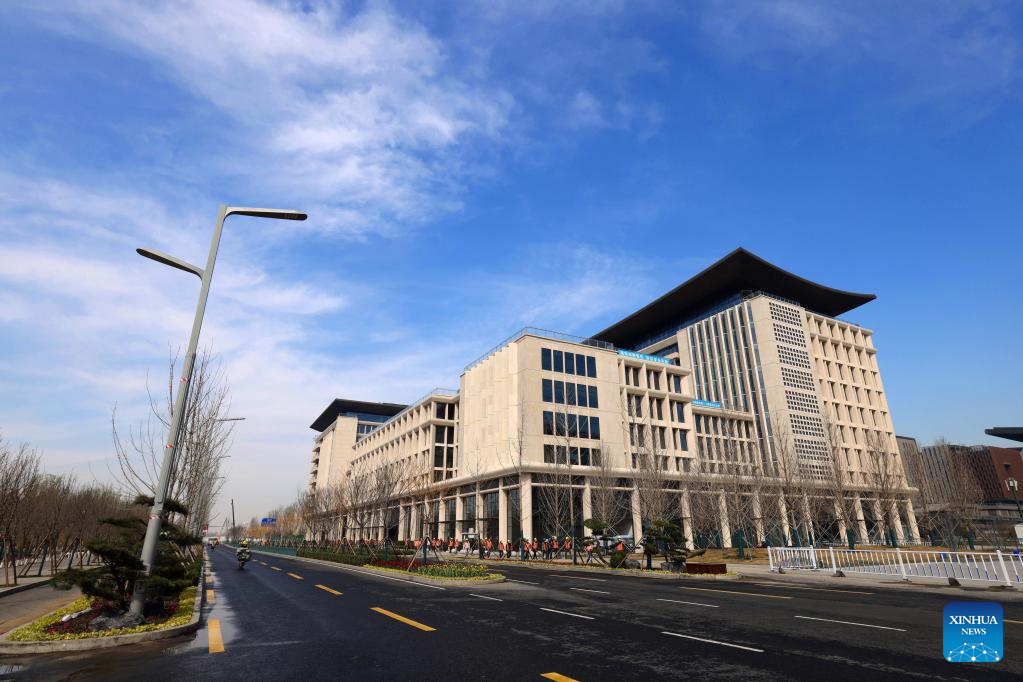
Photo taken on March 31, 2022 shows intelligent lampposts in Rongdong District of Xiong'an New Area, north China's Hebei Province. Dubbed China's youngest city and a "city of the future," Xiong'an New Area marks its fifth anniversary on Friday. China announced plans to establish Xiong'an New Area on April 1, 2017, to relieve Beijing of functions non-essential to its role as the national capital and advance the coordinated development of the Beijing-Tianjin-Hebei region.By the end of 2021, construction has begun on 177 key projects in Xiong'an, with a total investment of 618.4 billion yuan (97.2 billion U.S. dollars). Sixty of them have been completed. So far, the major roads to the city, the main streets in the city, the Ecological Corridor, and the urban water system have taken shape.(Xinhua/Xing Guangli)
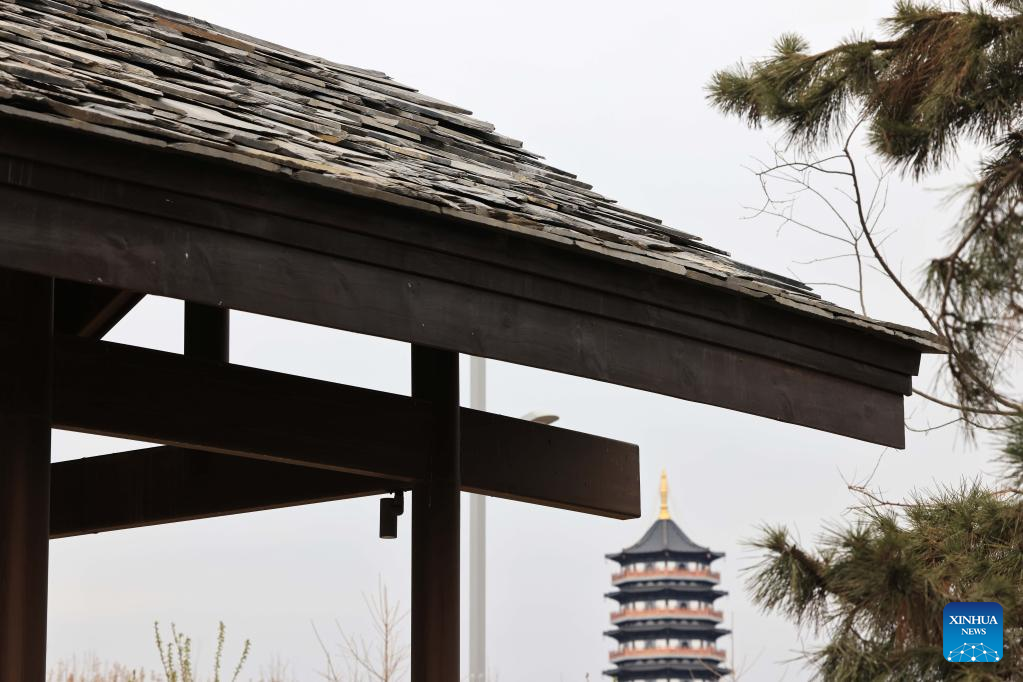
Photo taken on March 30, 2022 shows the Yuerong Park in Xiong'an New Area, north China's Hebei Province. Dubbed China's youngest city and a "city of the future," Xiong'an New Area marks its fifth anniversary on Friday. China announced plans to establish Xiong'an New Area on April 1, 2017, to relieve Beijing of functions non-essential to its role as the national capital and advance the coordinated development of the Beijing-Tianjin-Hebei region.By the end of 2021, construction has begun on 177 key projects in Xiong'an, with a total investment of 618.4 billion yuan (97.2 billion U.S. dollars). Sixty of them have been completed. So far, the major roads to the city, the main streets in the city, the Ecological Corridor, and the urban water system have taken shape.(Xinhua/Xing Guangli)
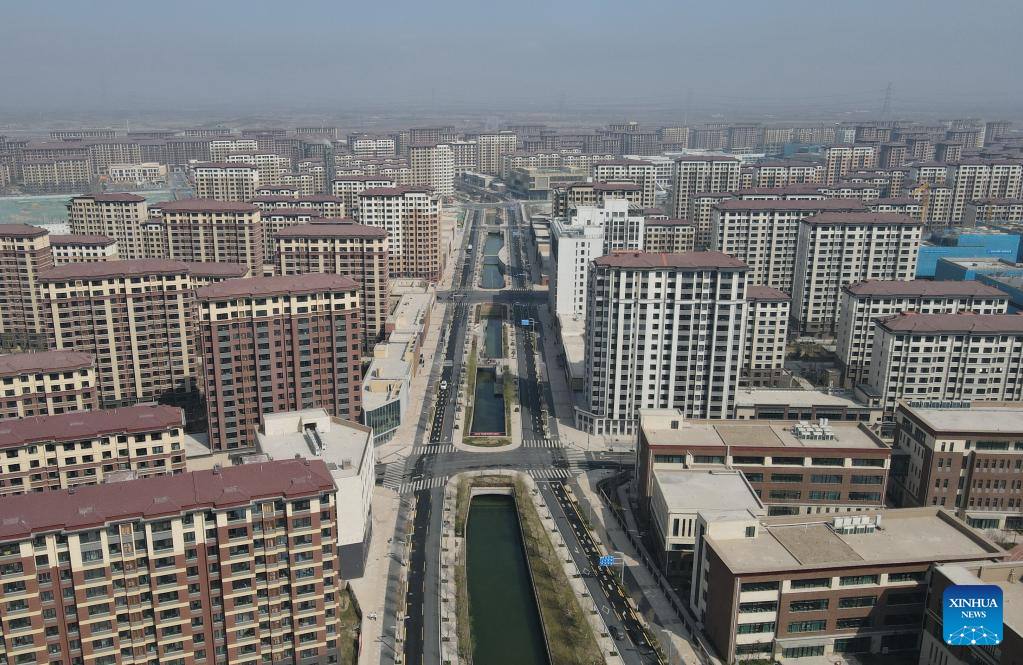
Aerial photo taken on March 31, 2022 shows a view of Rongdong District in Xiong'an New Area, north China's Hebei Province. Dubbed China's youngest city and a "city of the future," Xiong'an New Area marks its fifth anniversary on Friday. China announced plans to establish Xiong'an New Area on April 1, 2017, to relieve Beijing of functions non-essential to its role as the national capital and advance the coordinated development of the Beijing-Tianjin-Hebei region.By the end of 2021, construction has begun on 177 key projects in Xiong'an, with a total investment of 618.4 billion yuan (97.2 billion U.S. dollars). Sixty of them have been completed. So far, the major roads to the city, the main streets in the city, the Ecological Corridor, and the urban water system have taken shape.(Xinhua/Yang Shiyao)

Photo taken on March 18, 2022 shows a carbon emission supervision platform in Xiong'an New Area, north China's Hebei Province. Dubbed China's youngest city and a "city of the future," Xiong'an New Area marks its fifth anniversary on Friday. China announced plans to establish Xiong'an New Area on April 1, 2017, to relieve Beijing of functions non-essential to its role as the national capital and advance the coordinated development of the Beijing-Tianjin-Hebei region.By the end of 2021, construction has begun on 177 key projects in Xiong'an, with a total investment of 618.4 billion yuan (97.2 billion U.S. dollars). Sixty of them have been completed. So far, the major roads to the city, the main streets in the city, the Ecological Corridor, and the urban water system have taken shape. (Xinhua/Zhu Xudong)
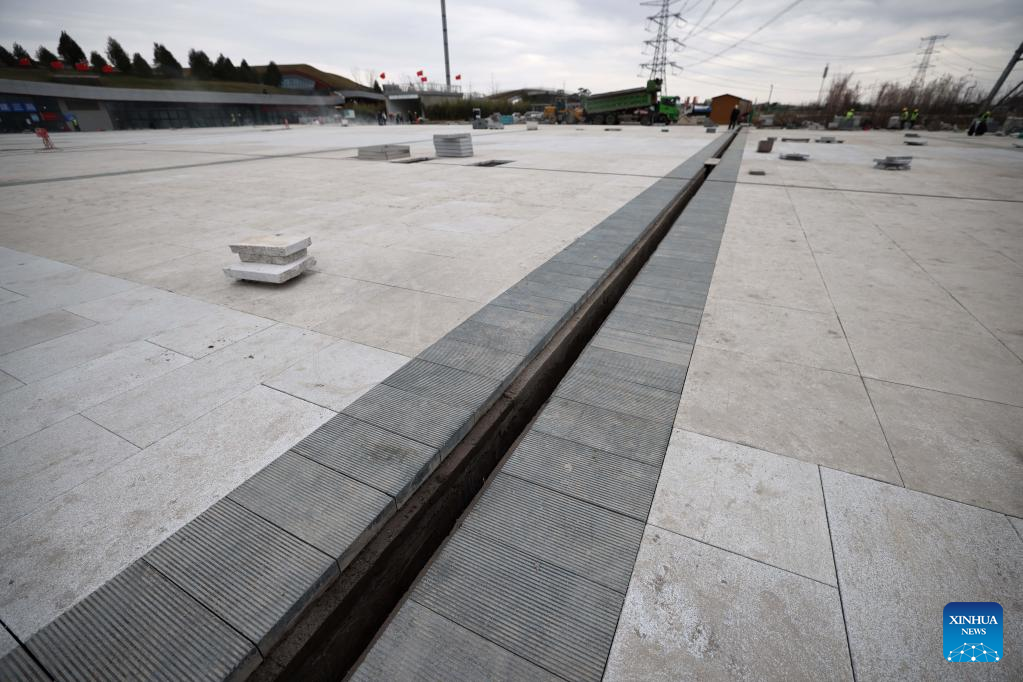
Photo taken on March 30, 2022 shows a ditch that can collect rainwater at a park in Xiong'an New Area, north China's Hebei Province. Dubbed China's youngest city and a "city of the future," Xiong'an New Area marks its fifth anniversary on Friday. China announced plans to establish Xiong'an New Area on April 1, 2017, to relieve Beijing of functions non-essential to its role as the national capital and advance the coordinated development of the Beijing-Tianjin-Hebei region.By the end of 2021, construction has begun on 177 key projects in Xiong'an, with a total investment of 618.4 billion yuan (97.2 billion U.S. dollars). Sixty of them have been completed. So far, the major roads to the city, the main streets in the city, the Ecological Corridor, and the urban water system have taken shape.(Xinhua/Xing Guangli)
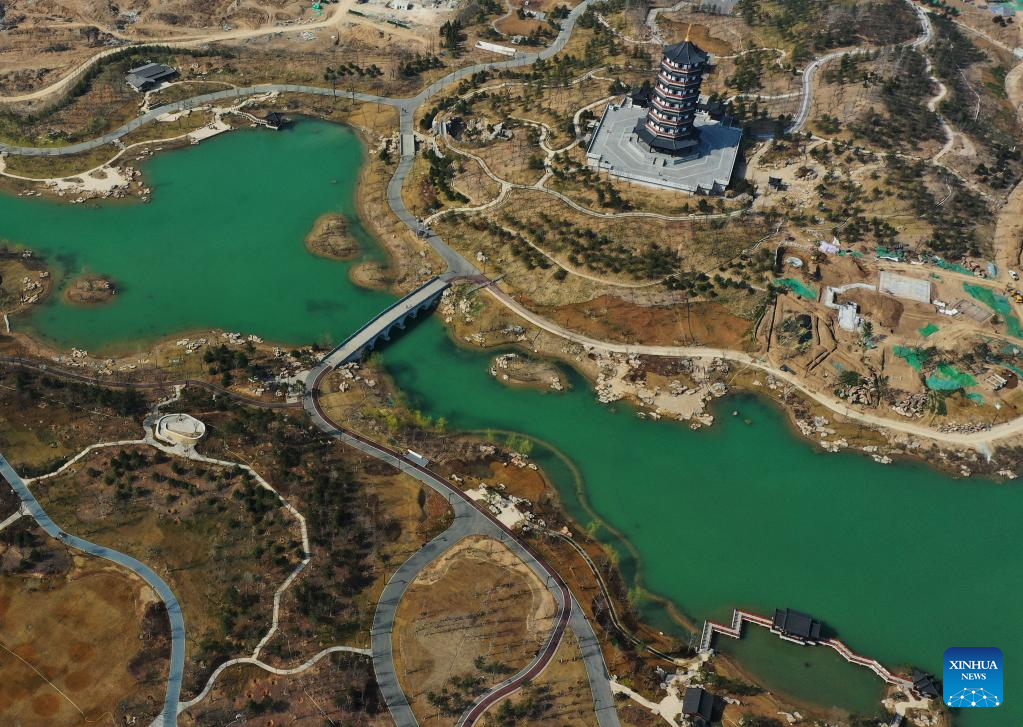
Aerial photo taken on March 28, 2022 shows the Yuerong Park in Xiong'an New Area, north China's Hebei Province. Dubbed China's youngest city and a "city of the future," Xiong'an New Area marks its fifth anniversary on Friday. China announced plans to establish Xiong'an New Area on April 1, 2017, to relieve Beijing of functions non-essential to its role as the national capital and advance the coordinated development of the Beijing-Tianjin-Hebei region.By the end of 2021, construction has begun on 177 key projects in Xiong'an, with a total investment of 618.4 billion yuan (97.2 billion U.S. dollars). Sixty of them have been completed. So far, the major roads to the city, the main streets in the city, the Ecological Corridor, and the urban water system have taken shape.(Xinhua/Yang Shiyao)
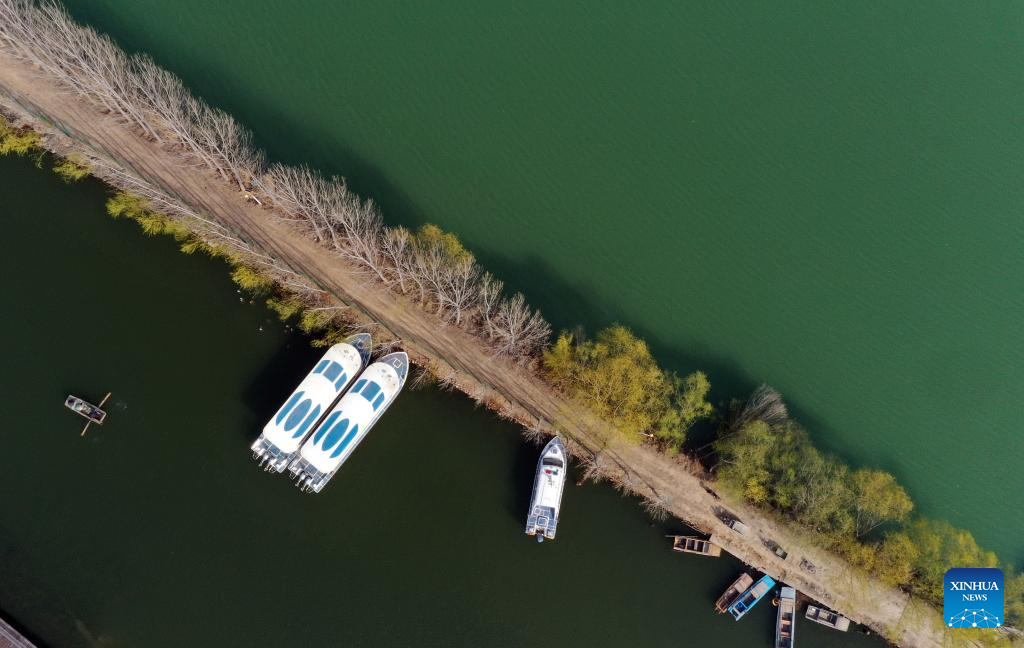
Aerial photo taken on March 28, 2022 shows a view of Baiyangdian Lake in Xiong'an New Area, north China's Hebei Province. Dubbed China's youngest city and a "city of the future," Xiong'an New Area marks its fifth anniversary on Friday. China announced plans to establish Xiong'an New Area on April 1, 2017, to relieve Beijing of functions non-essential to its role as the national capital and advance the coordinated development of the Beijing-Tianjin-Hebei region.By the end of 2021, construction has begun on 177 key projects in Xiong'an, with a total investment of 618.4 billion yuan (97.2 billion U.S. dollars). Sixty of them have been completed. So far, the major roads to the city, the main streets in the city, the Ecological Corridor, and the urban water system have taken shape.(Xinhua/Luo Xuefeng)
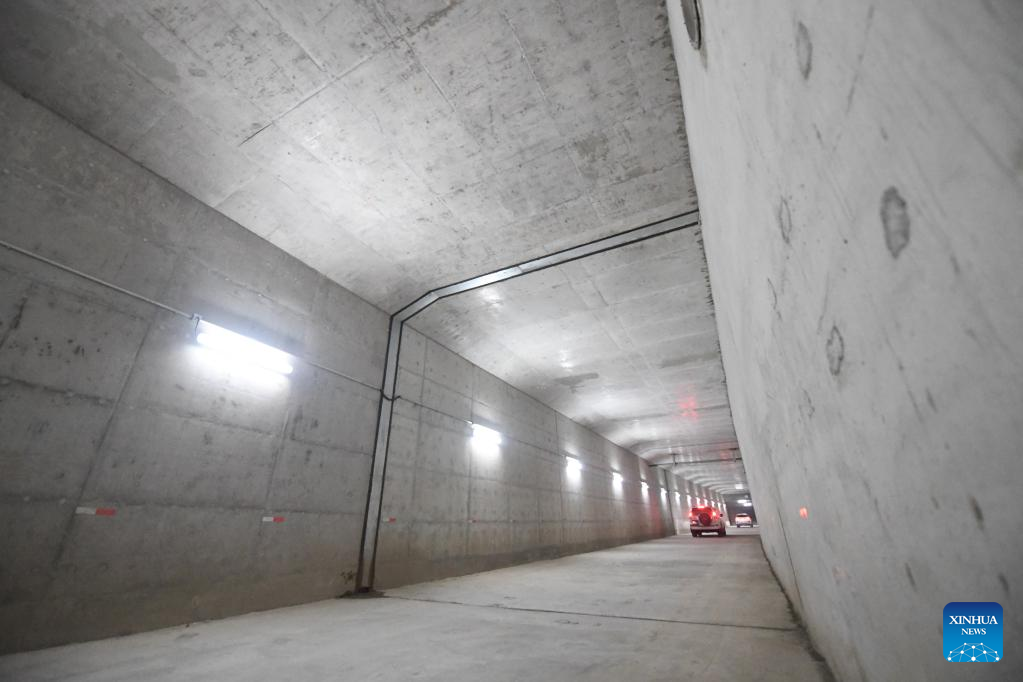
Photo taken on March 30, 2022 shows an underground logistics channel in Rongdong District of Xiong'an New Area, north China's Hebei Province. Dubbed China's youngest city and a "city of the future," Xiong'an New Area marks its fifth anniversary on Friday. China announced plans to establish Xiong'an New Area on April 1, 2017, to relieve Beijing of functions non-essential to its role as the national capital and advance the coordinated development of the Beijing-Tianjin-Hebei region.By the end of 2021, construction has begun on 177 key projects in Xiong'an, with a total investment of 618.4 billion yuan (97.2 billion U.S. dollars). Sixty of them have been completed. So far, the major roads to the city, the main streets in the city, the Ecological Corridor, and the urban water system have taken shape.(Xinhua/Zhu Xudong)
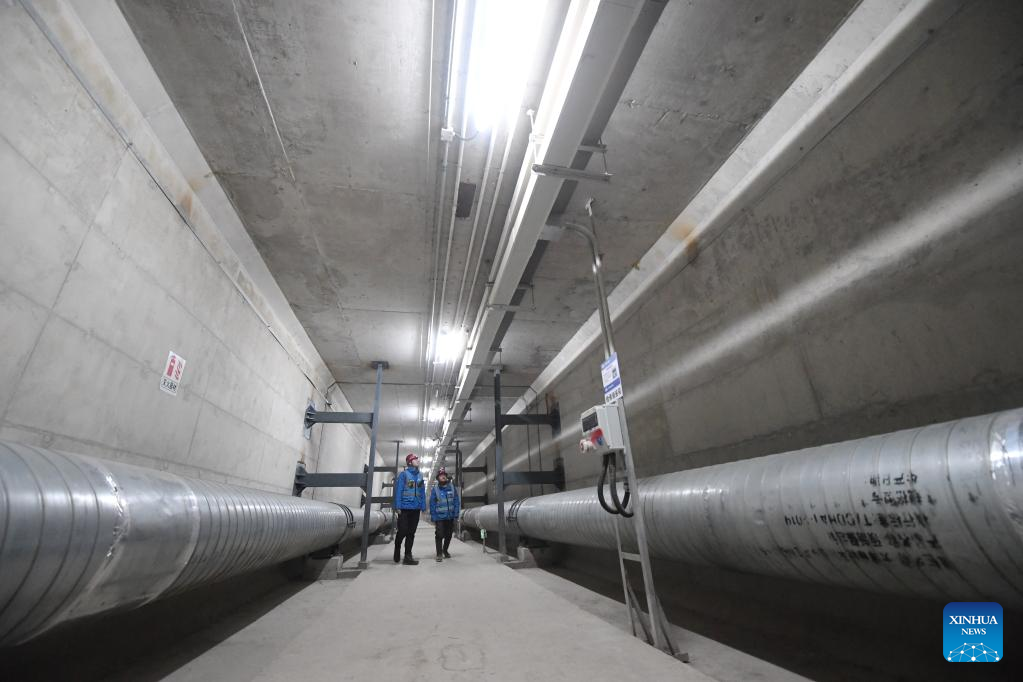
Staff members inspect an underground pipeline system in Rongdong District of Xiong'an New Area, north China's Hebei Province, March 30, 2022. Dubbed China's youngest city and a "city of the future," Xiong'an New Area marks its fifth anniversary on Friday. China announced plans to establish Xiong'an New Area on April 1, 2017, to relieve Beijing of functions non-essential to its role as the national capital and advance the coordinated development of the Beijing-Tianjin-Hebei region.By the end of 2021, construction has begun on 177 key projects in Xiong'an, with a total investment of 618.4 billion yuan (97.2 billion U.S. dollars). Sixty of them have been completed. So far, the major roads to the city, the main streets in the city, the Ecological Corridor, and the urban water system have taken shape.(Xinhua/Zhu Xudong)
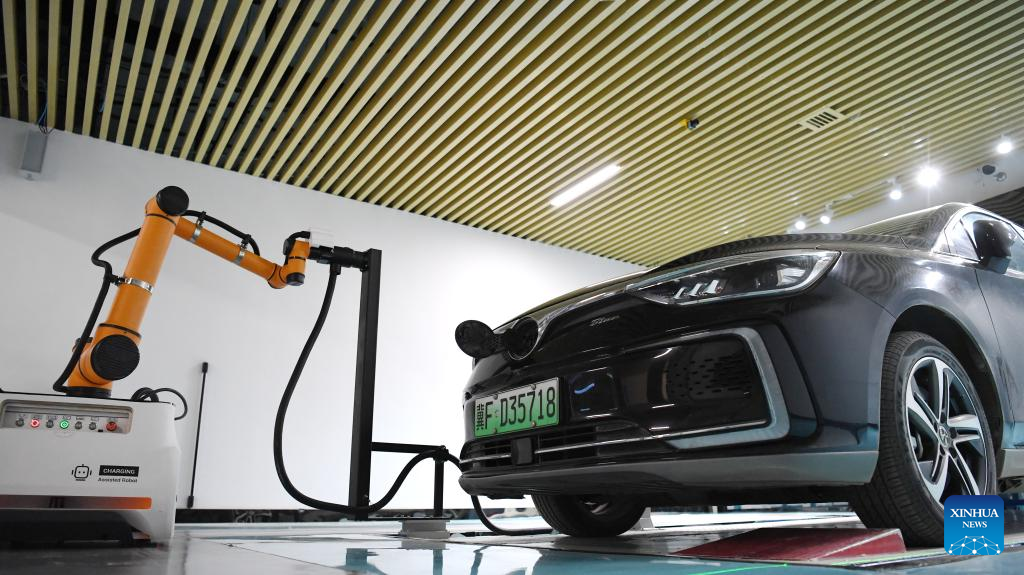
An electric vehicle gets charged up via a robot at a charging station in Xiong'an New Area, north China's Hebei Province, March 18, 2022. Dubbed China's youngest city and a "city of the future," Xiong'an New Area marks its fifth anniversary on Friday. China announced plans to establish Xiong'an New Area on April 1, 2017, to relieve Beijing of functions non-essential to its role as the national capital and advance the coordinated development of the Beijing-Tianjin-Hebei region.By the end of 2021, construction has begun on 177 key projects in Xiong'an, with a total investment of 618.4 billion yuan (97.2 billion U.S. dollars). Sixty of them have been completed. So far, the major roads to the city, the main streets in the city, the Ecological Corridor, and the urban water system have taken shape.(Xinhua/Zhu Xudong)
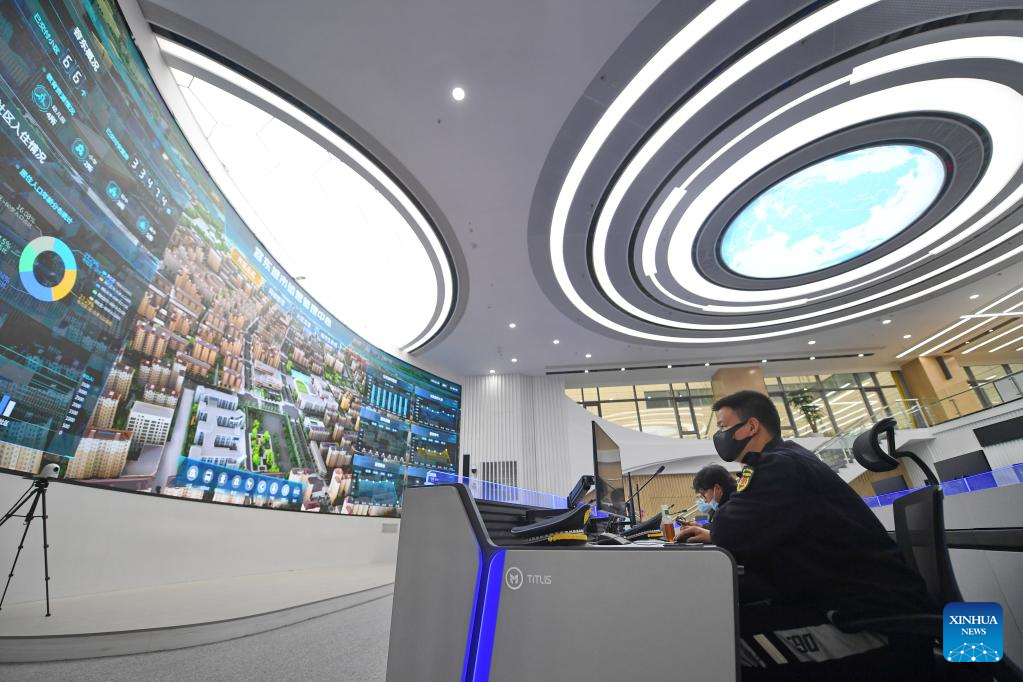
Staff members work at the intelligent operations center in Rongdong District of Xiong'an New Area, north China's Hebei Province, March 29, 2022. Dubbed China's youngest city and a "city of the future," Xiong'an New Area marks its fifth anniversary on Friday. China announced plans to establish Xiong'an New Area on April 1, 2017, to relieve Beijing of functions non-essential to its role as the national capital and advance the coordinated development of the Beijing-Tianjin-Hebei region.By the end of 2021, construction has begun on 177 key projects in Xiong'an, with a total investment of 618.4 billion yuan (97.2 billion U.S. dollars). Sixty of them have been completed. So far, the major roads to the city, the main streets in the city, the Ecological Corridor, and the urban water system have taken shape.(Xinhua/Zhu Xudong)
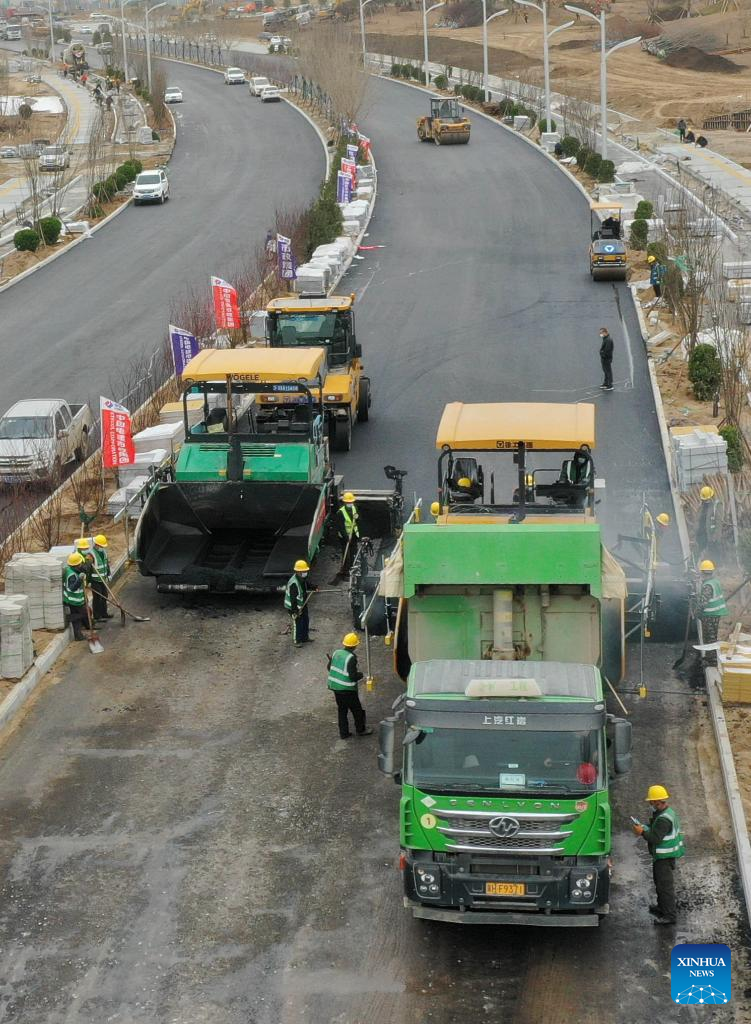
In this aerial photo, workers pave a road in Xiong'an New Area, north China's Hebei Province, March 25, 2022. Dubbed China's youngest city and a "city of the future," Xiong'an New Area marks its fifth anniversary on Friday. China announced plans to establish Xiong'an New Area on April 1, 2017, to relieve Beijing of functions non-essential to its role as the national capital and advance the coordinated development of the Beijing-Tianjin-Hebei region.By the end of 2021, construction has begun on 177 key projects in Xiong'an, with a total investment of 618.4 billion yuan (97.2 billion U.S. dollars). Sixty of them have been completed. So far, the major roads to the city, the main streets in the city, the Ecological Corridor, and the urban water system have taken shape.(Xinhua/Yang Shiyao)
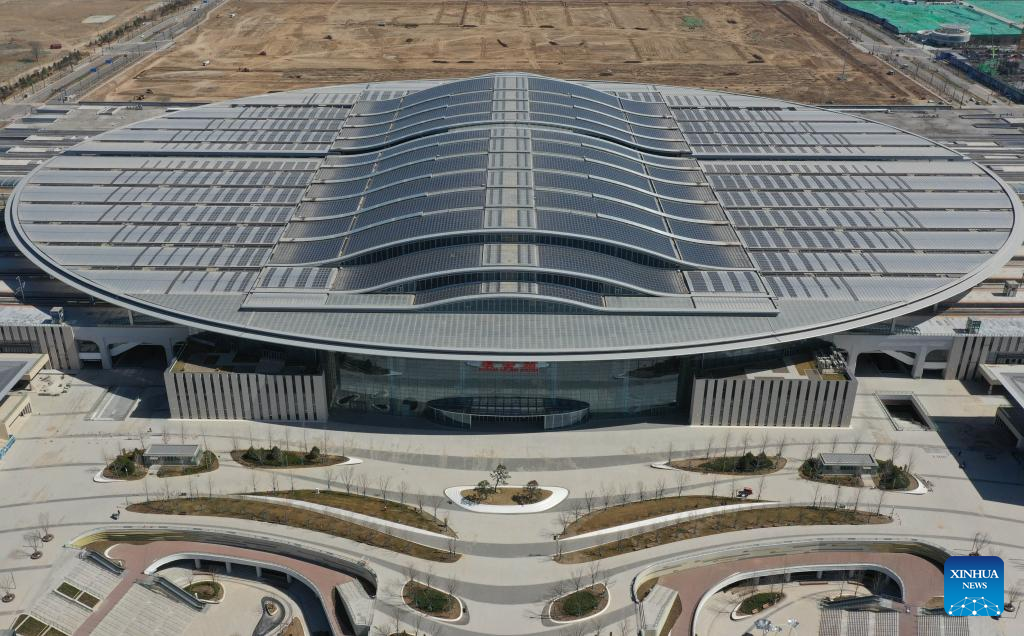
Aerial photo taken on March 31, 2022 shows the Xiong'an Railway Station in Xiong'an New Area, north China's Hebei Province. Dubbed China's youngest city and a "city of the future," Xiong'an New Area marks its fifth anniversary on Friday. China announced plans to establish Xiong'an New Area on April 1, 2017, to relieve Beijing of functions non-essential to its role as the national capital and advance the coordinated development of the Beijing-Tianjin-Hebei region.By the end of 2021, construction has begun on 177 key projects in Xiong'an, with a total investment of 618.4 billion yuan (97.2 billion U.S. dollars). Sixty of them have been completed. So far, the major roads to the city, the main streets in the city, the Ecological Corridor, and the urban water system have taken shape.(Xinhua/Yang Shiyao)

A man tries a fitness facility in Xiong'an New Area, north China's Hebei Province, March 18, 2022. Dubbed China's youngest city and a "city of the future," Xiong'an New Area marks its fifth anniversary on Friday. China announced plans to establish Xiong'an New Area on April 1, 2017, to relieve Beijing of functions non-essential to its role as the national capital and advance the coordinated development of the Beijing-Tianjin-Hebei region.By the end of 2021, construction has begun on 177 key projects in Xiong'an, with a total investment of 618.4 billion yuan (97.2 billion U.S. dollars). Sixty of them have been completed. So far, the major roads to the city, the main streets in the city, the Ecological Corridor, and the urban water system have taken shape.(Xinhua/Zhu Xudong)
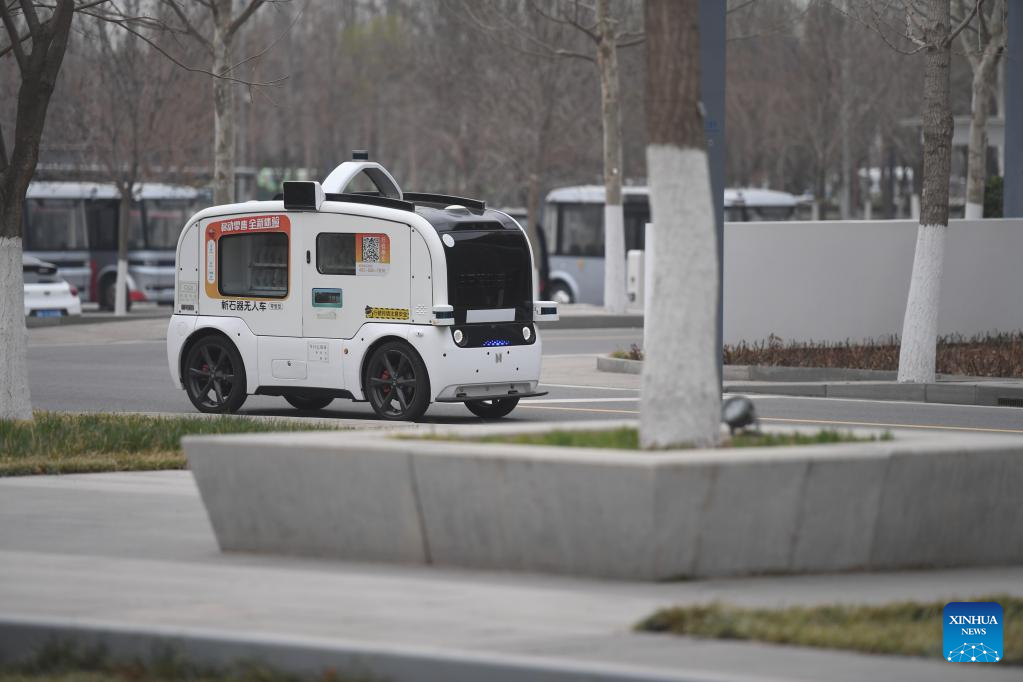
Photo taken on March 31, 2022 shows an intelligent vendor vehicle in Xiong'an New Area, north China's Hebei Province. Dubbed China's youngest city and a "city of the future," Xiong'an New Area marks its fifth anniversary on Friday. China announced plans to establish Xiong'an New Area on April 1, 2017, to relieve Beijing of functions non-essential to its role as the national capital and advance the coordinated development of the Beijing-Tianjin-Hebei region.By the end of 2021, construction has begun on 177 key projects in Xiong'an, with a total investment of 618.4 billion yuan (97.2 billion U.S. dollars). Sixty of them have been completed. So far, the major roads to the city, the main streets in the city, the Ecological Corridor, and the urban water system have taken shape.(Xinhua/Zhu Xudong)
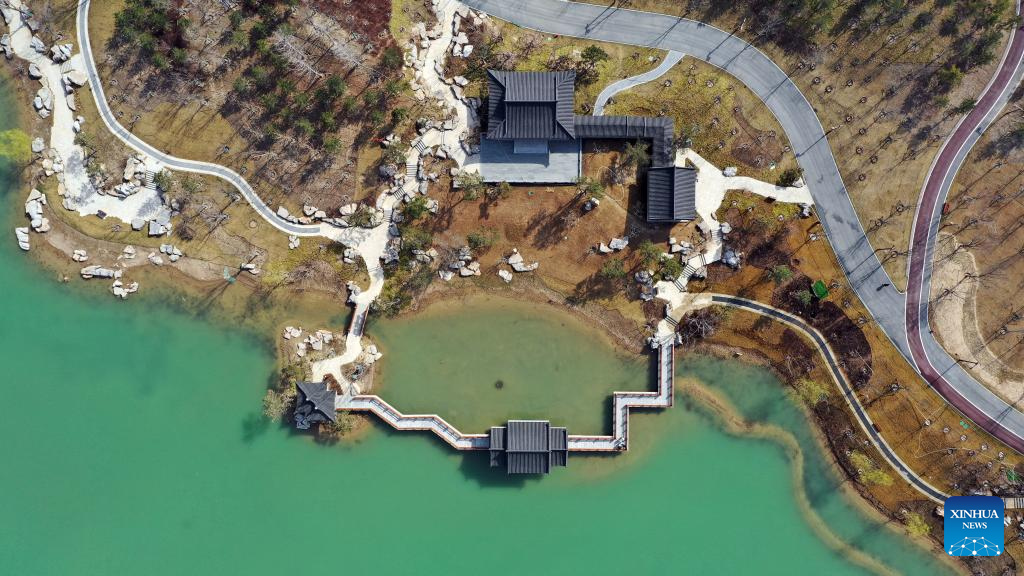
Aerial photo taken on March 28, 2022 shows the Yuerong Park in Xiong'an New Area, north China's Hebei Province. Dubbed China's youngest city and a "city of the future," Xiong'an New Area marks its fifth anniversary on Friday. China announced plans to establish Xiong'an New Area on April 1, 2017, to relieve Beijing of functions non-essential to its role as the national capital and advance the coordinated development of the Beijing-Tianjin-Hebei region.By the end of 2021, construction has begun on 177 key projects in Xiong'an, with a total investment of 618.4 billion yuan (97.2 billion U.S. dollars). Sixty of them have been completed. So far, the major roads to the city, the main streets in the city, the Ecological Corridor, and the urban water system have taken shape.(Xinhua/Luo Xuefeng)
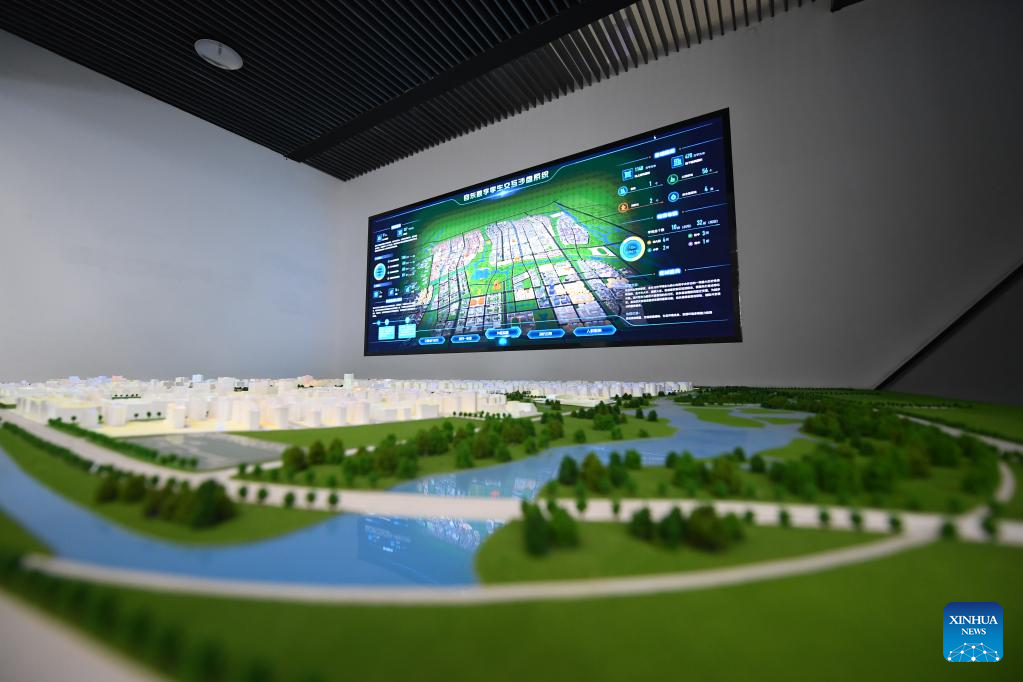
Photo taken on March 29, 2022 shows a view of the intelligent operations center in Rongdong District of Xiong'an New Area, north China's Hebei Province. Dubbed China's youngest city and a "city of the future," Xiong'an New Area marks its fifth anniversary on Friday. China announced plans to establish Xiong'an New Area on April 1, 2017, to relieve Beijing of functions non-essential to its role as the national capital and advance the coordinated development of the Beijing-Tianjin-Hebei region.By the end of 2021, construction has begun on 177 key projects in Xiong'an, with a total investment of 618.4 billion yuan (97.2 billion U.S. dollars). Sixty of them have been completed. So far, the major roads to the city, the main streets in the city, the Ecological Corridor, and the urban water system have taken shape.(Xinhua/Zhu Xudong)
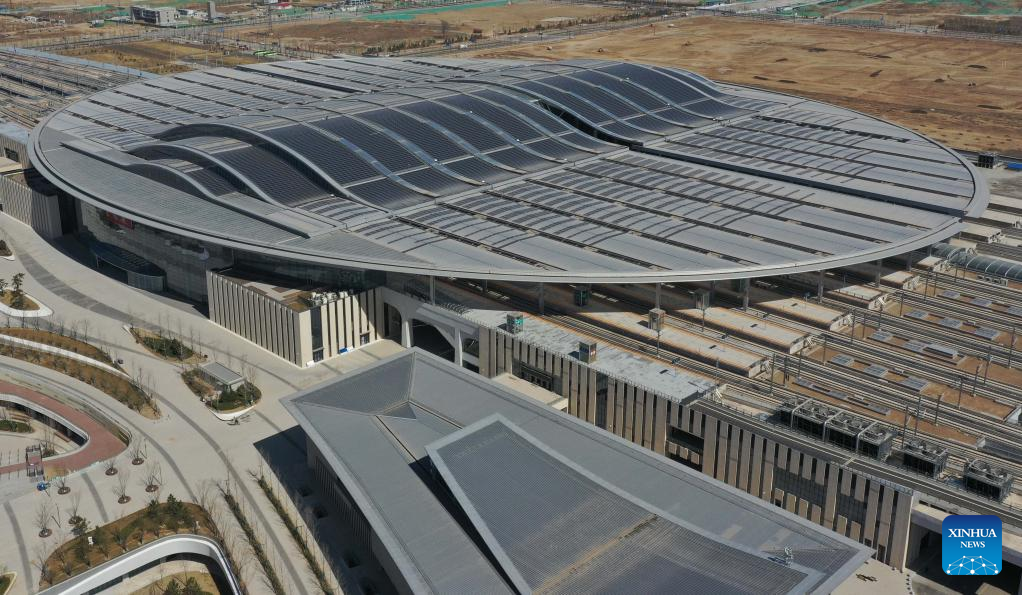
Aerial photo taken on March 31, 2022 shows the Xiong'an Railway Station in Xiong'an New Area, north China's Hebei Province. Dubbed China's youngest city and a "city of the future," Xiong'an New Area marks its fifth anniversary on Friday. China announced plans to establish Xiong'an New Area on April 1, 2017, to relieve Beijing of functions non-essential to its role as the national capital and advance the coordinated development of the Beijing-Tianjin-Hebei region.By the end of 2021, construction has begun on 177 key projects in Xiong'an, with a total investment of 618.4 billion yuan (97.2 billion U.S. dollars). Sixty of them have been completed. So far, the major roads to the city, the main streets in the city, the Ecological Corridor, and the urban water system have taken shape.(Xinhua/Yang Shiyao)
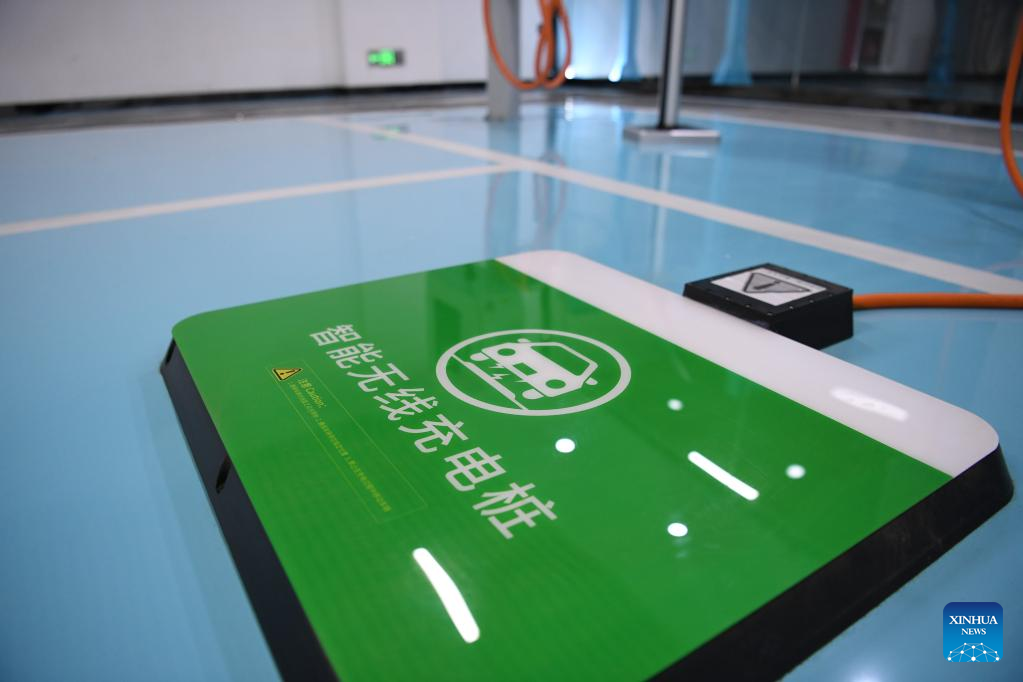
Photo taken on March 18, 2022 shows a wireless charging pile at a charging station in Xiong'an New Area, north China's Hebei Province. Dubbed China's youngest city and a "city of the future," Xiong'an New Area marks its fifth anniversary on Friday. China announced plans to establish Xiong'an New Area on April 1, 2017, to relieve Beijing of functions non-essential to its role as the national capital and advance the coordinated development of the Beijing-Tianjin-Hebei region.By the end of 2021, construction has begun on 177 key projects in Xiong'an, with a total investment of 618.4 billion yuan (97.2 billion U.S. dollars). Sixty of them have been completed. So far, the major roads to the city, the main streets in the city, the Ecological Corridor, and the urban water system have taken shape. (Xinhua/Zhu Xudong)
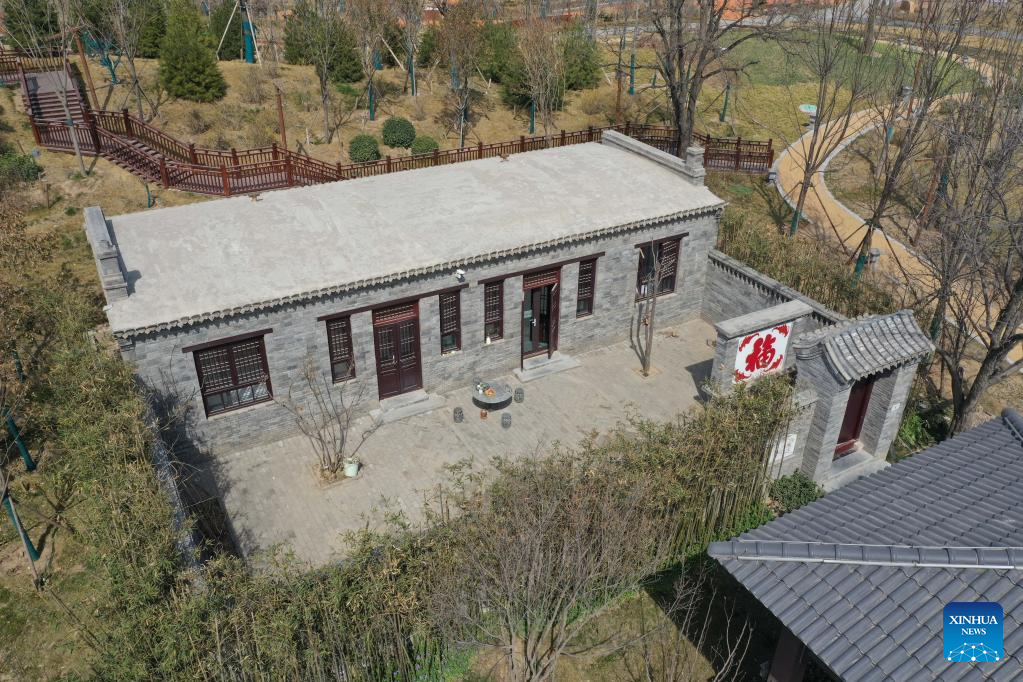
Aerial photo taken on March 28, 2022 shows a traditional residence in Xiong'an New Area, north China's Hebei Province. Dubbed China's youngest city and a "city of the future," Xiong'an New Area marks its fifth anniversary on Friday. China announced plans to establish Xiong'an New Area on April 1, 2017, to relieve Beijing of functions non-essential to its role as the national capital and advance the coordinated development of the Beijing-Tianjin-Hebei region.By the end of 2021, construction has begun on 177 key projects in Xiong'an, with a total investment of 618.4 billion yuan (97.2 billion U.S. dollars). Sixty of them have been completed. So far, the major roads to the city, the main streets in the city, the Ecological Corridor, and the urban water system have taken shape.(Xinhua/Zhu Xudong)



